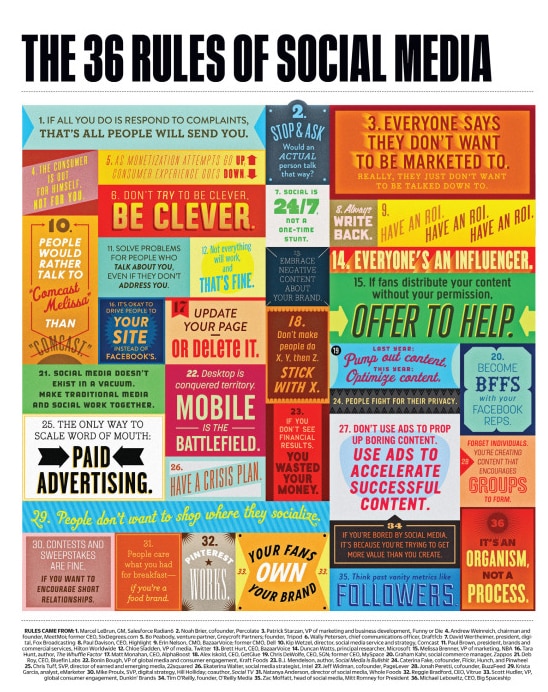These design fails are more proof that graphic design has a major impact in business, and in life!



















A dose of design to delight to brighten your day!
These design fails are more proof that graphic design has a major impact in business, and in life!



















Establishing an online presence these days is paramount for businesses – your website serves as a virtual storefront, a platform for expression, and a gateway to the global community. However, navigating the plethora of website-building platforms can be daunting. Among the most popular choices are WordPress, Squarespace, and Wix. Each offers unique features and functionalities, but which one is the right fit for your needs? Let’s delve into the pros and cons of each to help you make an informed decision.

WordPress is the undisputed heavyweight champion of the website-building world, powering over 40% of all websites on the internet. Its open-source nature and extensive plugin ecosystem make it a favorite among developers and businesses alike. Here are some of the pros and cons of using WordPress:
Pros:
Cons:
Note: We LOVE WordPress!! Almost all of the websites in our Web Portfolio are build in WordPress. Our clients love the ease of maintenance and updating. Take a look and let us know if you’d like to chat about building a new website.
Squarespace has gained popularity for its intuitive interface, stunning templates, and all-in-one platform that includes hosting, domain registration, and content management. Here are some of the pros and cons of using Squarespace:
Pros:
Cons:
Wix is another popular website-building platform known for its drag-and-drop editor, extensive template library, and affordable pricing plans. Here are some of the pros and cons of using Wix:
Pros:
Cons:
Choosing the right website-building platform depends on your specific needs, preferences, and technical expertise. WordPress offers unmatched flexibility and scalability but requires ongoing maintenance. Squarespace provides sleek design and simplicity but may be limiting for some. Wix offers DIY website building made easy but comes with limitations in flexibility and SEO. Ultimately, weigh the pros and cons of each platform carefully to make a decision that aligns with your goals and resources.
Contact us to chat about your web goals and see how BluErth can help you build a beautiful and functional website.
In the online realm, where attention spans are fleeting and first impressions are crucial, the design of a business website plays a pivotal role in shaping its success. Beyond mere aesthetics, good design encompasses usability, functionality, and brand identity, influencing user perception, engagement, and ultimately, conversion rates. Investing in thoughtful design is a strategic imperative for businesses aiming to thrive in the competitive online landscape.
BluErth has over 20 years designing and building successful websites. Check out our recent web design portfolio!

In the vast expanse of the internet, where countless websites vie for attention, capturing the fleeting interest of users is paramount. Good design serves as a powerful tool for grabbing attention and creating engagement from the moment a user lands on a website. Visually appealing layouts, striking imagery, and intuitive navigation draw users in, encouraging them to explore further and delve deeper into the content.
User experience (UX) lies at the heart of good design, encompassing the ease of navigation, clarity of information, and overall satisfaction derived from interacting with a website. A well-designed website anticipates the needs and preferences of users, guiding them seamlessly through the browsing journey and minimizing friction at every touchpoint. From intuitive navigation menus to responsive design that adapts seamlessly to different devices, every aspect of UX design contributes to a positive user experience, fostering trust and loyalty among visitors.
A business website serves as a digital storefront, representing the brand to the online world. Good design plays a pivotal role in shaping brand identity and perception, conveying the essence of the brand’s personality, values, and positioning. Through cohesive visual elements such as color schemes, typography, and imagery, a well-designed website reinforces brand consistency and authenticity, leaving a lasting impression on visitors and strengthening brand recall.
In an era rife with online scams and dubious websites, establishing credibility and trust is paramount for businesses seeking to attract and retain customers. Good design instills confidence in visitors, signaling professionalism, reliability, and attention to detail. A clean, well-organized layout, accompanied by high-quality imagery and polished typography, conveys professionalism and competence, reassuring users that they are dealing with a reputable business worthy of their trust.
At the end of the day, the ultimate measure of a business website’s success lies in its ability to convert visitors into customers or leads. Good design plays a pivotal role in optimizing conversion rates by guiding users through the conversion funnel and nudging them towards desired actions. Whether it’s a clear call-to-action (CTA) button strategically placed within the layout or persuasive visual cues that draw attention to key offerings, every design element is meticulously crafted to drive conversions and maximize ROI.
In the fast-paced world of web design, staying ahead of the curve is essential for maintaining relevance and competitive edge. Good design goes beyond mere aesthetics; it embraces innovation and adapts to evolving trends and technologies to ensure that a website remains fresh, modern, and user-friendly. From responsive design that caters to mobile users to immersive multimedia experiences that captivate audiences, embracing cutting-edge design trends allows businesses to stay ahead of the competition and resonate with today’s digitally savvy consumers.
In an increasingly digital world where online presence is synonymous with business success, the importance of good design cannot be overstated. From capturing attention and fostering engagement to enhancing brand identity and driving conversions, every aspect of a business website’s design plays a pivotal role in shaping its success. By investing in thoughtful design that prioritizes user experience, aesthetics, and functionality, businesses can create immersive digital experiences that resonate with audiences, foster trust and loyalty, and ultimately, drive measurable results. In the competitive landscape of the digital marketplace, good design isn’t just a luxury; it’s a strategic imperative for businesses aiming to thrive and succeed in the online realm.
Contact us to get a free consult and let us show you how we can improve your traffic and ranking and sales with a better website design!
Your customers come to your website asking “What’s in it for me?” If they don’t see the answer to that question within 15 seconds, statistics tell us that they’ll leave. That’s how long you have to capture someone’s attention on your website – 15 seconds. So, if you haven’t captured their attention within this short time, then you’ve lost a potential sale.
Your homepage content can be divided into 5 sections that tell the story of your product and motivate your audience to a sale:
1. A Clear Header Statement
Clarity sells products and services, so its important to tell your potential customers up front, in the first glance, what your are selling. Don’t get cute, and don’t be vague. You want to immediately tell or show the product or service you are selling, and don’t make them hunt for
information. Keep it simple and succinct.
2. A Clear & Strong Call to Action
The easier you make it for your customers to give you money, the better. Just under your clear header statement, place a strong and clear call to action. Avoid asking questions, or cryptic statements like “find out why”, “Learn More”, etc, if you can. Just keep it simple, like “Buy Now” or “Sign Up Now”.
3. Create a Failure Scenario
Illustrate to your customers what problem you are solving, and show them what bad thing will happen if they do not buy your product or engage your services. For example, “Manual time card input wastes hundreds of man hours per year and costs you thousands of dollars”.
4. Create a Success Scenario
Illustrate to your customers how buying your product or hiring your services will make their lives easier and better. For example, “Our automatic time card entry service costs saves you time and money, so you can focus on more important things”. In this step you are delivering a message that appeals to the aspirations of the customer, so that they make an association between your product and their problems getting solved.
5. Spell Out A Plan
Show your customers how to engage with your product or your services. Make it look really easy – you want your customers to feel that you can make their lives easier, not more complicated. A stepped plan is typically the easiest to understand. For instance, “Step 1: Download the Software. Step 2: Install. Step 3: Sit back and relax!” Keep it really simple here! A common mistake people make is to provide too much information so the customer can make an informed decision. But in reality, this hardly ever works, and visitors will leave your site if they don’t know what to do. Make it dummy-proof.
Keep in mind that 65% of people are visual learners so the more you can add visual or graphic elements, the better you will hold their attention. If you keep your content relevant, user-friendly, simple, and appealing, you’ll see results.
These design fails are proof that graphic design has a major impact in business, and in life!












If you’ve been second-guessing the value of design for your business – don’t! Good design gives you a competitive edge, drives powerful marketing results and allows you to stand out.
In short, design is fiscally beneficial. In 2005, a group called The Design Council studied 63 portfolios of companies that traded on the FTSE (Financial Times Stock Exchange) over the course of a decade. What they discovered was that the companies that put an emphasis on design did way better than the ones that didn’t – they outperformed the FTSE 100 index by 200% in fact.
A more layman-friendly figure that this study by The Design Council also determined was that “every £100 a design alert business spends on design increases turnover by £225”. So, investing in design is a bit like investing in future profits, it may cost a bit now, but a little down the track, these studies suggest that you’ll likely be glad you did so.
Badly designed websites are often not read, trusted or visited for any length of time. Poor interface design is associated with mistrust of a website. If users don’t like the design of a site, then they typically will not explore any further than the homepage.
Now, don’t try to justify a poor website design by saying ‘at least my content is great’, because 94% of the reason users will reject a site is for design-related issues. So, your content could be stellar and as top-notch as ever, but a poor website design can bring it all to a crashing halt.
What makes a brand memorable? Good customer service and a good product certainly help, but what about beyond that? Of course, it’s design.
Design techniques like a selective use of color can trigger the memory and keep your brand fresh in the mind. So, perhaps incorporating a distinct design technique like color, a unique layout, an original concept etc. can be that one added element that ensures your brand stays memorable and recognizable.
One of the major focus points of graphic design is simply to make complex information easier to digest. Technology and content are becoming ever more complex and powerful. Good design in interfaces, data display, right through to physical product design and advertisements makes it all way easier and more welcoming for the consumer.
As a consumer you encounter hundreds upon thousands of brands, products and businesses, all competing to get your attention and convince you to buy what they’re selling. So, what’s the best way to make a good first impression? You guessed it: good design.
Studies have shown that visual appeal can be assessed within about 50 milliseconds. This boils down to the fact that designers have to make a good impression within the space of 50 milliseconds.
We’re in a world now where just about every business is online in some form, in fact encountering a business’ website is often some people’s first encounter with a business at all. This, on top of the fact that a lot of businesses now are 100% online means that the impression your website leaves is more important than ever. And how do we leave a good impression? Good design.
An all too common misconception about design and designers is that design is solely about the way a product or company looks. In reality, a good designer will consider how it looks as secondary to how it works.
To break the concept of a ‘designer’ down quickly, let me just say that ‘designer’ and ‘communicator’ should be interchangeable synonyms.
A designer isn’t just going to make your website look good, they are going to consider who you are as a company, what are your values, who your audience is, what will go on your homepage, what information is most and least important to display, what the competitors in your industry are doing. They are going to pull apart your content and reassemble it in a way that helps you communicate to your audience in the best possible way.
There’s a popular saying: “Good design is invisible”. This is the idea that design should be experienced, not noticed.
I’m sure that at one time or another you have noticed design for all the wrong reasons – pixelated images, hard to read fonts, information that is hard to follow etc. In these cases, the [bad] design is extremely visible, and users ask why the designer made those choices and they consider ways it could be done better. But, when you encounter a really great piece of design, chances are you won’t notice the design at all. Instead, you’ll consume the content easily and associate good feelings with that site or brand. Why? Because good design is invisible.
Consistency is arguably the key rule to a successful brand, and therefore, a successful business. An inconsistent brand is utterly forgettable. It is a simple and easily reinforced rule when you have a good, strong handle on design.
What happens when you don’t practice consistency in branding and design? Well, you’re left with inconsistency. You risk your logo being used incorrectly, your colors being loosely adapted and your audience doubting your authenticity. Using a similar color to your brand’s color seems harmless, but in the long term, little irregularities snowball and become a big problem.
A call to action is a super useful tool that is given to you when you invest in producing good design. It’s not enough to engage your customers – you have to turn those clicks into sales to meet your bottom line.
Motivate your audience to take action and click that button, buy that product, share that image – whatever your goal is, convince them to take a step forward by pairing enticing type and even more enticing design.
The majority of your potential customers aren’t going to read your company’s mission statement, so the best way to go about communicating this is visually. Consider a way to capture your tone and values through imagery and typography and let the design do the talking.
A study by The Design Council determined that design-alert businesses are “twice as likely to have developed new products or services…” So, consider where your brand could extend to with just a few stylistic adjustments.
As we all know, social media outlets can be a quagmire, an overload, a jumble of messages. There is a LOT of content out there, and let’s face it: most of it is useless. It can be easier than you might think to make your business stand out in the crowd using social media outlets. I have seen as much as 80% of a website’s traffic streaming directly from Facebook, Pinterest and Twitter, so I know that it can be an extraordinarily effective tool, if used properly. If you plan to launch a social media campaign to boost your business, follow these rules to increase your chance for success.
The above rules are taken from “The 36 Rules of Social Media”, infographic below, and are, in my opinion as a web and SEO professional, the most important 5 rules to which all companies should adhere.

Logo design is all around us and serve as an instant reminder of a company or a product. No wonder, then, that logo design features so prominently in our lives and our culture. In an age where everyone must have a website to support their company, the demand for well designed logos has never been higher.
More logos are out there than ever before, and with that comes the challenge of standing out from the crowd. How do you create something original that stands out in a sea of identities? The challenge for all designers is to create something unique and iconic that is not only memorable, but will endure with changes in the economy and culture. These general steps guide most designers through the process of conceptualizing and developing a logo:
Simple
A simple logo design allows for easy recognition and allows the logo to be versatile and memorable. Effective logos feature something unexpected or unique without being overdrawn. Continue reading “What Makes a Good Logo?”
Logos are a critical aspect of any marketing strategy. As a company’s single most important graphical representation, a logo anchors a company’s brand and becomes the most visible manifestation of the company within its target market.
Let’s face it: we are a culture that judges everything at first glance. It is part of our evolutionary advantage to make a split-second decision about whether something is good for us or bad for us. We can tap into that innate aspect of human nature when we create a good first impression by putting a beautiful logo in front of a potential customer’s eyes. Continue reading “Why a Good Logo is Essential to Business Success”